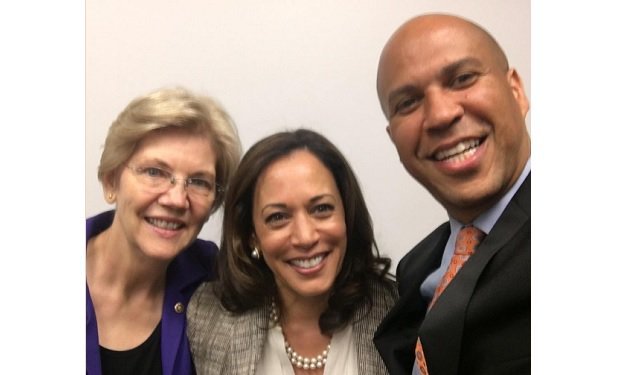
The moment Trump won the election, there was speculation about who the Democrats will nominate next time. Matthew Ygleisias argues that Bernie Sanders is the frontrunner by all conventional metrics. Others will say it’s Elizabeth Warren. Or Kamala Harris. Or Kristen Gilbrand.
Four years ago, it was pretty obvious that Hillary Clinton was the frontrunner for the Democratic nomination, and many expected her to be the nominee for President. However, the problem with Hillary is that the presidency doesn’t usually go the obvious candidate three years earlier, since the White House tends to switch parties when non-incumbents win.
If a party holds the White House, the nominee of their party can generally be predicted three and a half years in advance. About half the time, it will be the incumbent President. The two exceptions would be 1968 when LBJ dropped out (although the nomination went to the Vice-president) and 1976 when the incumbent President was a congressman six months after Nixon’s second inaugural address.
The presidential nomination of the party that held the White House went to an incumbent Vice-President in 1960, 1968, 1988, and 2000. In other cases where a party was fighting for a third term in the White House, and the incumbent President wasn’t able, the nomination went to a notable party member who came second in the question for the nomination the last time around, and had maintained a high profile, either as Senator (in McCain’s case) or as Secretary of State (with Hillary Clinton.) Both ended up losing to a political novice.
The candidate of the opposition party isn’t as easy to predict in advance. Everyone wanted Eisenhower to run, and while it wasn’t clear in 1950 that he was going to seek presidency, he did end up doing just that, essentially as the result of a draft campaign. However, his political beliefs were undefined enough that he could have just as easily run for the Democratic nomination. Kennedy built his own campaign apparatus, upending politics as usual.

A 1965 Jules Feiffer Village Voice comic strip did have a liberal afraid of a Richard Nixon comeback. But Tricky Dick wasn’t really seen as a powerhouse until he was able to take credit for Republican successes in the 1966 midterms, and turn his reputation around.
Jimmy Carter was an obscure Governor in 1973. That year, he appeared on a game show, where the players had to guess who he was. Since he agreed with a comment about whether he provided a service for women, he was asked if he was in the fashion industry.
Reagan was a prominent critic of a Democrat who won a narrow election post-Watergate in 1977. Bill Clinton was an obscure small-state Governor in 1989, at a time when it looked like Republicans had a lock on the White House. Obama was a prominent new Senator in 2005. His big book hadn’t come out yet, Katrina hadn’t happened as of July 2005 and there were more obvious contenders for his party’s nomination. People didn’t think Donald Trump would run for President six months into Obama’s second term, much less win the nomination. But perhaps he was able to do so because two northeastern moderates (Chris Christie and David Petraeus) had their reputations destroyed in major scandals.
The most obvious candidate who ended up being President was George W Bush. He was the son of a former President turned big state Governor in 1994, a task he accomplished by defeating a Democratic incumbent. He also had the bonus of being really religious in a party that depends on evangelicals.
An issue for Democrats is that the next election isn’t one that historically favors them. There has only been one time in the last 100+ years that a party got kicked out of the White House after just one term. That said, Trump is especially unpopular, so he might end up joining Carter in that exclusive category. The nominees parties have selected in that political environment have been the party’s previous nominee (Adlai Stevenson in 1956- good news for Hillary Clinton), Senators who get the base aflutter (Barry Goldwater in 1964, George McGovern in 1972), a former Vice President (Mondale in 1984), a congressional leader who sought the nomination before (Dole in 1996), a war hero Senator (Kerry in 2004) and a former Governor who came close to the nomination earlier (Romney in 2012). We can also add to the category of nominees who failed against the incumbent party a Governor (Dukakis in 1988) although he ran in a field in which the frontrunner (a relatively young Senator who came close in the previous nomination) was destroyed by a sex scandal.
There’s precedent for Democrats picking Hillary Clinton, Bernie Sanders, Elizabeth Warren, Cory Booker, Kamala Harris or Andrew Cuomo next time around, for those guys losing, and for the next President to be someone who wins in 2024, but hasn’t yet been elected to major office.
Advertisements Share this:





